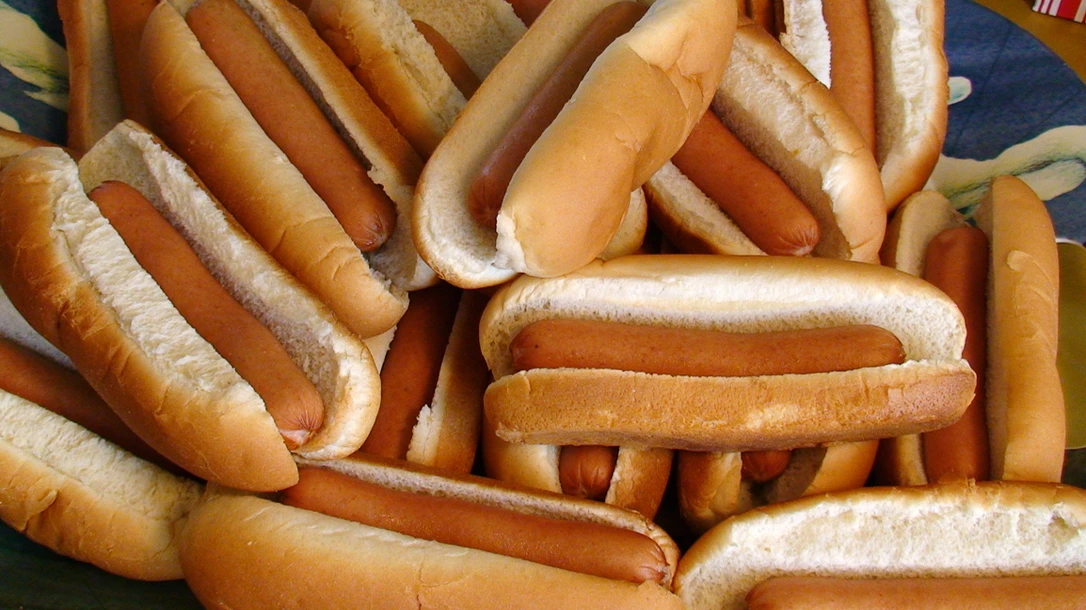Imagine yourself at a long table with numerous other competitors, participating in a competitive eating contest, and in front of you are dozens upon dozens of hot dogs. Your goal is to consume those hot dogs in the fastest manner possible and beat the times of all other participants to be declared the winner. I also have to add that it needs to be accomplished in a matter of minutes.
That’s the underlying objective for a competitive eater. This athlete (as it is a sport) takes their competition quite seriously, with a regimen that involves intense training and relentless dedication to making their stomach hold an incredible amount of food. Think you want to take a stab at this unique lifestyle? Then, loosen your jaw and dig in; this is going to be one wild ride to this all-you-can-eat way of living.

What is Competitive Eating?
The sport of competitive eating, also called speed eating, involves multiple competitors who compete against one another to eat a large quantity of food in the shortest amount of time. Foods such as hot dogs, chicken wings, pizza, and pies are common foods consumed during these intense contests. However, more unconventional items, such as whole turkeys, vegetables, and even vegan items, are also consumed in “small town” contests.
Competitive eating contests are held throughout the United States and in many countries worldwide. Time limits may seem extremely short to the newbies to the sport, with eight, ten, twelve, and fifteen being the most common lengths of time. Contests, in most cases, have a master of ceremonies, as well as numerous judges who are present to uphold the rules and regulations of the event and, ultimately, weigh the competitors’ food and declare a winner upon completion.
Words such as “chipmunking,” in which a competitor stuffs as much food into their mouth at the end of the contest, “Dunking” which describes the action of dipping their food into the water; and “Reversal,” in which food is regurgitated, are all popular speed-eating terms.
Eating in Excess
Many people not in the know about speed eating may think that this isn’t a sport you can train for, and if you’re a big, stocky person, you should be able to win easily. This is wrong on many levels.
First, you definitely need to train (more on the training regimen below), specifically to train your stomach to take in a huge amount of food, much more than it has ever held before.
Two, the size of the competitors, especially those who are constant winners at this unique sport, aren’t necessarily the biggest people in the room and may very well be slender, even some may say scrawny in build and body type. In fact, many competitive eaters strive during their training to maintain the lowest body fat percentage of their entire lives.
Additionally, many competitors are in great shape and win because of it. With less fat, there is more room in their midsection for greater expansion of their stomach. For those who want to tackle this spectacle of gluttony, the skinny (no pun intended) as to how to begin is detailed below…

Stretching Their Stomachs
In order to hold all the food within their stomachs (remember, regurgitation is considered a disqualification), speed-eating competitors have to stretch out their stomachs in order to make this happen. Many do this by drinking large amounts of water (some competitors train by drowning two full gallons of good old H20) over a very short time frame.
A variation on this is when the competitor, in training, drinks water and a load of low-calorie vegetables or salad material. In fact, Ed “Cookie” Jarvis, a retired competitive eater, would drink two gallons of water after consuming two large, cooked heads of cabbage. He did this every day for two weeks straight before the competition. Not only is stretching the stomach an absolute necessity to even make it past the preliminaries of speed eating, but the eater’s jaw (or, more specifically, the jaw muscle) also needs to be strengthened.
This is accomplished either by chewing large wads of gum or by chomping down on silicone tubes (like those used for jaw surgery patients or autistic individuals). These are available in different degrees of strength, and it’s best to start at the bottom and work your way up to the toughest ones available.
Breathwork
Learning the proper way to breathe when consuming a plate load of hot dogs (or any other contest food) is essential to becoming a true contender of the sport. Like swimmers who take a breath every two or three strokes, a speed eater must do the same. This is a learned tactic, and it can mean the difference between taking home the prize or heading home with a full stomach but empty-handed.
If it’s hot dogs you’re eating, you may take a breath every two or three; if it’s wings, maybe every five or so. There is no “correct” number. It’s based on your own personal preferences and what works for your own body. Without exploring this aspect of training, you’ll be out of breath very quickly, and your recovery time to lower your increased heart rate will put you at a severe disadvantage compared to the other competitors.
Remember, there is no pacing yourself or long-term strategy with speed eating. It’s zero to sixty in two seconds, and it doesn’t let up from there.

It’s Not For Everyone
Although it may sound like an absolute blast to join this distinctive sport, it is surely not for everyone. For one thing, it can be highly dangerous. Binge eating can cause stomach perforations. Drinking gallons of water during training can lead to water intoxication (caused by diluted electrolytes in the blood.) Internal bleeding, heartburn, abdominal cramping, nausea, and diarrhea are all dangerous conditions that can affect the eater after the competition.
If all that isn’t enough to deter you, then how about dying during the contest? The leading form of death in speed eating is, naturally, choking. Stuffing their mouths rapidly and forcibly swallowing food is the fast track to choking, and it has taken the lives of about a dozen competitors since 2012.






















